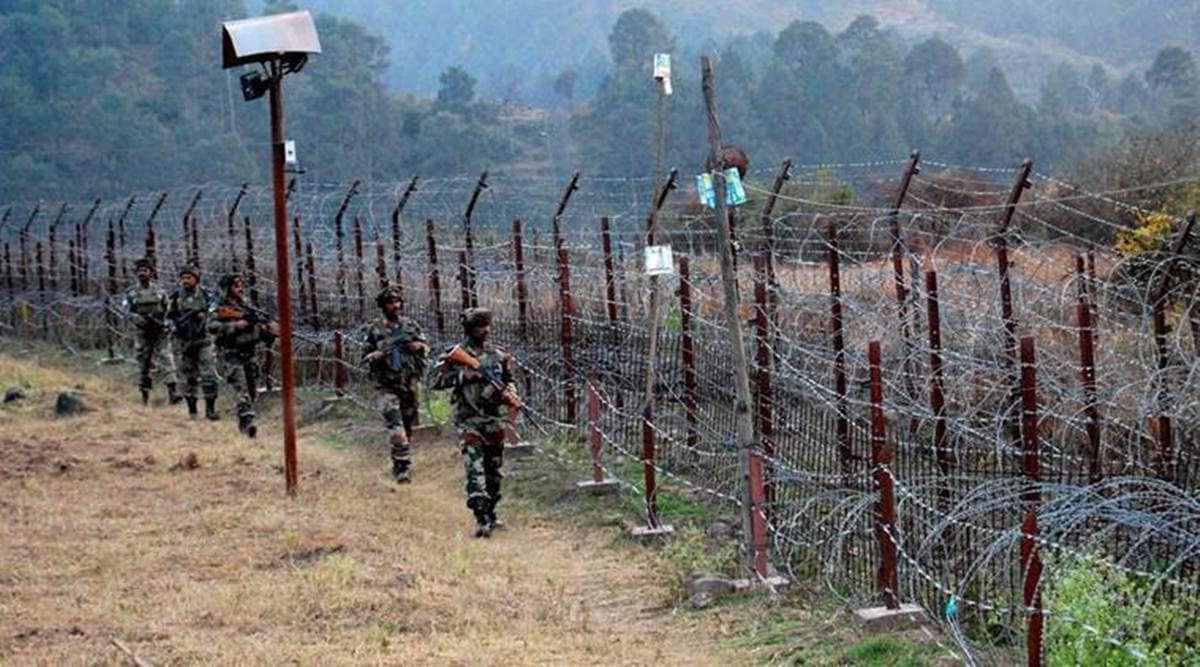India-Pakistan Ceasefire: Analysis And Implications

Table of Contents
Historical Context of Ceasefires between India and Pakistan
The history of India and Pakistan is unfortunately punctuated by periods of intense conflict interspersed with attempts at ceasefire. These attempts, often fragile and short-lived, reflect the deep-seated mistrust and unresolved issues between the two nuclear-armed neighbours. The Indo-Pak conflict, primarily centered around the disputed territory of Kashmir, has resulted in numerous wars and skirmishes.
- 1949 Ceasefire: Following the First Kashmir War, a ceasefire agreement was signed, establishing the Line of Control (LoC). However, this didn't resolve the underlying territorial dispute.
- 1965 Tashkent Agreement: After the 1965 war, the Tashkent Declaration aimed to de-escalate tensions, but it proved to be a temporary measure.
- 1972 Simla Agreement: This agreement, signed after the 1971 war, established the LoC as the de facto border and committed both nations to resolving their differences peacefully. However, the Kashmir dispute remained a major point of contention.
- 2003 Ceasefire: A significant ceasefire along the LoC was announced in 2003, significantly reducing cross-border violence. This period of relative calm was interrupted by periodic escalations.
These examples highlight the cyclical nature of the Indo-Pak relationship – periods of relative calm giving way to heightened military tensions and LoC violations. The effectiveness of past ceasefires has often been limited by underlying political issues and the continued presence of cross-border terrorism. The Kashmir dispute, in particular, remains a major stumbling block to achieving lasting peace. Understanding this complex history is critical to assessing the current situation.
Factors Contributing to the Current Ceasefire (or Lack Thereof)
The current state of the India-Pakistan ceasefire is a complex interplay of internal and external factors. The political climate in both countries plays a significant role. In India, domestic political considerations often influence the government's approach to Pakistan. Similarly, Pakistan's internal political instability can impact its foreign policy decisions and its commitment to maintaining peace.
- International Pressure: International actors, including the United States and China, have at times played a mediating role, urging both countries towards de-escalation. Their influence, however, is often limited by the deeply entrenched mistrust between the two nations.
- Cross-Border Terrorism: The persistent threat of cross-border terrorism originating from Pakistan remains a major obstacle to lasting peace. Accusations and counter-accusations regarding support for terrorist groups continue to fuel mistrust and heighten tensions.
- Domestic Political Considerations: Elections and shifts in power in both countries significantly impact the state of relations. Nationalistic rhetoric can often overshadow diplomatic efforts, exacerbating the situation.
These factors highlight the fragility of the India-Pakistan ceasefire, illustrating how easily it can be disrupted by shifts in the political landscape, international relations, and the ongoing issue of cross-border terrorism.
Economic Implications of the Ceasefire (or its Absence)
The economic implications of the India-Pakistan ceasefire (or its absence) are substantial. A lasting peace would unlock significant economic opportunities, primarily through increased trade and tourism.
- Increased Trade: Opening up trade routes between the two countries could boost economic growth significantly, particularly for border regions. The potential for expanded markets and reduced transportation costs is considerable.
- Tourism Boom: Increased tourism would benefit both countries, generating revenue and creating employment opportunities. The historical and cultural connections between India and Pakistan present significant potential for tourism development.
- Reduced Military Expenditure: A sustained ceasefire would allow both countries to divert significant resources currently allocated to military spending towards development and welfare programs. The economic benefits of reduced military expenditure could be transformative.
Conversely, continued conflict leads to substantial economic losses through military expenditure, displacement, and disruptions to trade and tourism. The economic costs of instability far outweigh any potential short-term gains from conflict.
Implications for Regional Security and Stability
The India-Pakistan relationship has significant implications for regional security and stability in South Asia. The presence of nuclear weapons further complicates the situation, making any escalation extremely dangerous.
- Regional Relations: The state of the India-Pakistan ceasefire directly influences relations with other regional players, including China and Afghanistan. These countries often have their own interests and agendas in the region, influencing the dynamics of the India-Pakistan relationship.
- Geopolitical Implications: The rivalry between India and Pakistan has significant geopolitical implications, impacting alliances and power dynamics within the region. A stable ceasefire could contribute to regional cooperation, while continued conflict risks destabilizing the entire South Asian landscape.
- Potential for Escalation: The potential for further escalation remains a significant concern. Any miscalculation or unforeseen event could easily trigger a new round of conflict. Sustained dialogue and de-escalation efforts are crucial to prevent this.
Conclusion
The India-Pakistan ceasefire, a complex issue influenced by a multitude of political, economic, and security factors, requires careful consideration. The historical context, the influence of domestic and international actors, and the significant economic and security implications highlight the fragility of peace. Sustained dialogue, diplomatic efforts, and a commitment to resolving the underlying issues, particularly the Kashmir dispute, are paramount for achieving lasting peace. Understanding the nuances of the India-Pakistan ceasefire is crucial for promoting regional stability. Further research and informed discussion are necessary to navigate this delicate situation and strive for a sustainable and lasting peace between India and Pakistan. Continue to follow developments in the India-Pakistan ceasefire for the latest updates.

Featured Posts
-
 The Trump Administration And Cheap Oil Implications For The Energy Industry
May 12, 2025
The Trump Administration And Cheap Oil Implications For The Energy Industry
May 12, 2025 -
 John Wick 5 Latest Developments And The Ongoing Release Date Speculation
May 12, 2025
John Wick 5 Latest Developments And The Ongoing Release Date Speculation
May 12, 2025 -
 Cassidy Hutchinson Key Witness To Share Her Account In Upcoming Memoir
May 12, 2025
Cassidy Hutchinson Key Witness To Share Her Account In Upcoming Memoir
May 12, 2025 -
 Exceptional Performance Graham Rahals Porsche 911 Gt 3 Rs 4 0
May 12, 2025
Exceptional Performance Graham Rahals Porsche 911 Gt 3 Rs 4 0
May 12, 2025 -
 Marvels Cancelled Show A Henry Cavill Missed Opportunity
May 12, 2025
Marvels Cancelled Show A Henry Cavill Missed Opportunity
May 12, 2025
